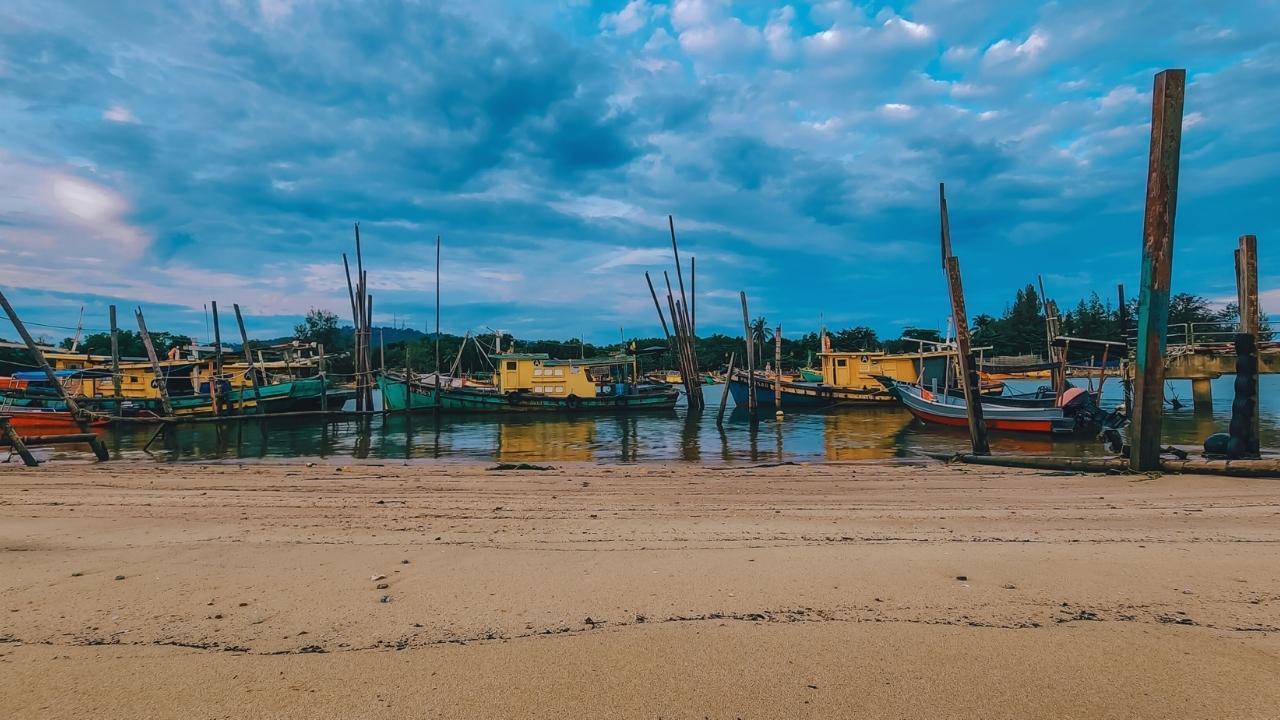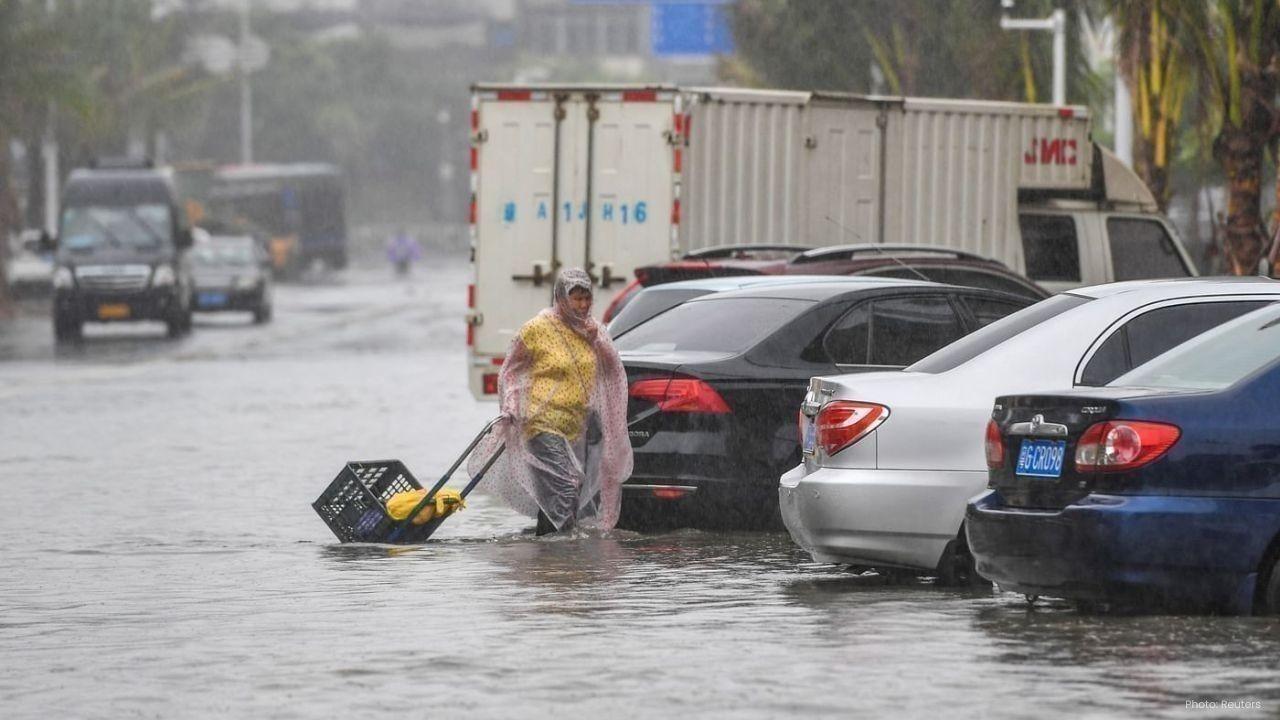
Join 10k+ people to get notified about new posts, news and tips.
Do not worry we don't spam!

Post by : Anish
Malaysia is home to some of Southeast Asia’s most densely populated coastal regions. Its coastlines are hubs of economic activity, tourism, trade, and cultural heritage. Yet, these same regions are among the most vulnerable to the impacts of climate change, particularly rising sea levels. Scientists predict that by 2050, substantial portions of Malaysia’s low-lying coastal areas could be inundated if immediate adaptation measures are not implemented.
Rising sea levels are primarily caused by global warming, which accelerates the melting of glaciers and polar ice caps, while simultaneously causing ocean thermal expansion. Malaysia, with its extensive coastlines along the Straits of Malacca, South China Sea, and Sulu Sea, faces the dual threat of flooding and coastal erosion. Without mitigation, these changes could significantly impact urban infrastructure, livelihoods, agriculture, and tourism industries that are vital to the national economy.
Penang, a major economic and tourist hub, is particularly susceptible to rising sea levels. The island’s low-lying areas, including George Town and Butterworth, are projected to experience significant flooding by 2050. Rising waters threaten residential areas, commercial districts, and vital transport infrastructure such as ports and bridges.
Authorities in Penang are evaluating a combination of hard and soft engineering solutions to mitigate these risks. Coastal defenses, including sea walls, levees, and tidal gates, are being planned in conjunction with urban redevelopment projects to enhance resilience. Additionally, local planners are incorporating flood-resistant building designs and zoning regulations that restrict development in high-risk areas.
Klang, one of Malaysia’s busiest port cities, is a critical economic center. Its strategic location on the west coast makes it highly vulnerable to tidal surges and sea-level rise. The city’s low-lying districts, particularly those near the Klang River estuary, face repeated flooding events even with modest rises in sea level.
Local governments are responding with comprehensive drainage upgrades, flood barrier construction, and river embankment reinforcement. Projects include widening canals, installing pump stations, and redesigning flood retention basins to accommodate future scenarios. These measures are intended to prevent economic disruption and protect residential communities from severe flooding.
Alor Setar, the capital of Kedah, is another coastal city under threat. Projections suggest that without significant intervention, parts of the city could become effectively isolated or partially submerged by 2050. Alor Setar’s vulnerability is compounded by its proximity to agricultural plains, particularly rice paddies, which are crucial for local food production.
City planners are exploring elevation of critical infrastructure, construction of levees along riverbanks, and development of early warning systems to manage flood risks. These interventions aim not only to protect urban populations but also to safeguard the livelihoods of farming communities that rely on coastal land.
Malaysia’s response to rising sea levels involves a combination of structural, ecological, and policy-driven measures. These strategies aim to reduce vulnerability, enhance resilience, and promote sustainable development along the coastlines.
One of the primary tools in Malaysia’s adaptation toolkit is the construction of coastal protection structures. Sea walls, levees, and tidal gates are being installed in high-risk areas to shield communities from storm surges and high tides. In addition to traditional hard structures, engineers are designing hybrid solutions that combine concrete barriers with landscaped embankments to absorb wave energy and reduce erosion.
Many cities are also implementing flood detention basins and stormwater management systems. These structures are designed to capture excess rainwater and tidal inflows, thereby preventing inland flooding. Investments in advanced drainage networks, pumping stations, and flood modeling software help authorities anticipate potential crisis points and act proactively.
Natural ecosystems are a cost-effective and sustainable method of coastal protection. Mangrove forests, in particular, act as natural buffers against erosion and storm surges. Malaysia has invested in large-scale mangrove restoration programs along vulnerable coastlines, replanting native species and rehabilitating degraded areas.
Mangroves serve multiple functions: they reduce wave energy, stabilize soil, and provide habitats for marine and bird life. In addition, mangroves contribute to carbon sequestration, supporting broader climate mitigation goals. Restoration projects often involve local communities, providing employment opportunities while educating residents about the ecological and economic importance of these forests.
Adaptation efforts extend beyond physical infrastructure. Malaysia is increasingly integrating climate considerations into urban planning and zoning policies. High-risk areas are designated as restricted zones for new development, and urban expansion is redirected to safer, higher ground.
Cities are promoting flood-resilient designs for buildings, including elevated structures, water-resistant materials, and emergency access routes. Retrofitting existing infrastructure is also a priority, with bridges, roads, and public facilities being reinforced or elevated where necessary. These measures aim to minimize the impact of future sea-level rise on urban populations while ensuring continuity of services.
The effectiveness of adaptation strategies depends heavily on community engagement. Public awareness campaigns educate residents about the risks associated with rising sea levels and provide guidance on evacuation procedures, home protection measures, and disaster preparedness.
Local governments, NGOs, and academic institutions collaborate to conduct workshops, drills, and educational programs. These initiatives ensure that communities are prepared for emergency scenarios and can participate actively in resilience-building projects. Community input is also valuable in identifying vulnerable zones, prioritizing interventions, and ensuring that solutions reflect local needs and cultural contexts.
Technology plays a pivotal role in Malaysia’s coastal resilience efforts. Satellite monitoring, geographic information systems (GIS), and real-time water-level sensors allow authorities to track changes in sea levels, rainfall patterns, and erosion rates. This data informs planning, construction, and emergency response.
Innovative engineering solutions are also being explored. Floating communities, adaptive architecture, and flood-resilient transport infrastructure are increasingly considered for long-term coastal urban planning. Researchers are studying regional climate models to forecast future scenarios and test the effectiveness of various intervention strategies before implementation.
The economic stakes of sea-level rise are significant. Coastal cities like Penang and Klang are hubs of trade, tourism, and industry. Disruptions caused by flooding, land loss, or infrastructure damage could have nationwide repercussions.
To mitigate potential economic losses, Malaysia is investing in preventive measures that not only protect existing assets but also create opportunities for sustainable growth. For example, green infrastructure projects, such as mangrove restoration and coastal parks, attract eco-tourism and support local businesses. Similarly, upgrading ports and transport facilities ensures continued competitiveness in regional trade.
Addressing rising sea levels is not solely a national challenge. Malaysia collaborates with regional and international partners to access expertise, funding, and advanced technology. ASEAN initiatives on climate adaptation, as well as partnerships with global environmental agencies, provide Malaysia with resources to enhance its resilience programs.
Knowledge exchange and joint research projects help Malaysian authorities stay informed about the latest adaptation strategies, from innovative coastal engineering solutions to community-based disaster preparedness programs. These collaborations strengthen Malaysia’s capacity to respond effectively to future challenges.
As the 2050 horizon approaches, Malaysia’s coastal cities are under increasing pressure to implement sustainable, long-term solutions. Strategies must evolve to address not only physical threats but also socio-economic challenges. Population growth, urban expansion, and economic development must be balanced against environmental risks.
Future adaptation plans are likely to focus on integrated coastal management, combining infrastructure, ecological restoration, urban planning, and community participation. Policymakers are emphasizing flexible strategies that can adjust to new data, ensuring that interventions remain effective as climate conditions change.
Education and research will continue to play a key role. Universities and research institutions are training the next generation of engineers, urban planners, and environmental scientists to design resilient cities and innovate solutions for complex climate challenges.
Rising sea levels pose a clear and present threat to Malaysia’s coastal cities. Without intervention, urban areas, agricultural zones, and critical infrastructure could face severe damage by 2050. However, Malaysia’s approach demonstrates that proactive planning, technological innovation, and community engagement can significantly mitigate these risks.
By investing in coastal protection, restoring natural barriers, enforcing adaptive urban planning, and fostering public awareness, Malaysia is creating a blueprint for resilience. Continued commitment from governments, communities, and international partners will be essential to ensure that coastal cities not only survive but thrive in the face of climate change.
The challenge is formidable, but with coordinated effort and forward-thinking strategies, Malaysia’s coastal cities can safeguard their populations, preserve economic activity, and maintain the cultural and ecological heritage that defines the nation.
This article is intended for informational purposes only. Projections of sea-level rise and adaptation measures are based on current research and may change as new data becomes available. Readers are encouraged to consult official sources, scientific studies, and local authorities for the most accurate and updated information.










JioHotstar Launches ‘Pitch To Get Rich’ Reality Show for Fashion Startups
JioHotstar’s new show ‘Pitch To Get Rich’ features 14 fashion startups competing for Rs 40 crore fun

Kantara Chapter 1 Box Office Day 1 Rishab Shetty Film Hits ₹60 Cr
Rishab Shetty’s Kantara Chapter 1 collects ₹60 crore on Day 1, breaking records across India with hu

FIA Declares Heat Hazard for Singapore F1 Race Due to Extreme Heat
FIA applies heat hazard rule for Singapore Grand Prix as high heat and humidity challenge F1 drivers

Trapeze Artist Dies After Fall at German Circus Show
A 27-year-old trapeze artist died in Germany after falling during a circus show. The tragic accident

Dhanashree Verma Reveals Yuzvendra Chahal Cheated Early in Marriage
Dhanashree Verma opens up on her divorce from Yuzvendra Chahal, revealing he cheated within months o

Aishwarya Rai with Aaradhya Spotted in Paris Ahead of Fashion Show
Aishwarya Rai Bachchan and daughter Aaradhya spotted in Paris ahead of L'Oréal Paris Fashion Week, d